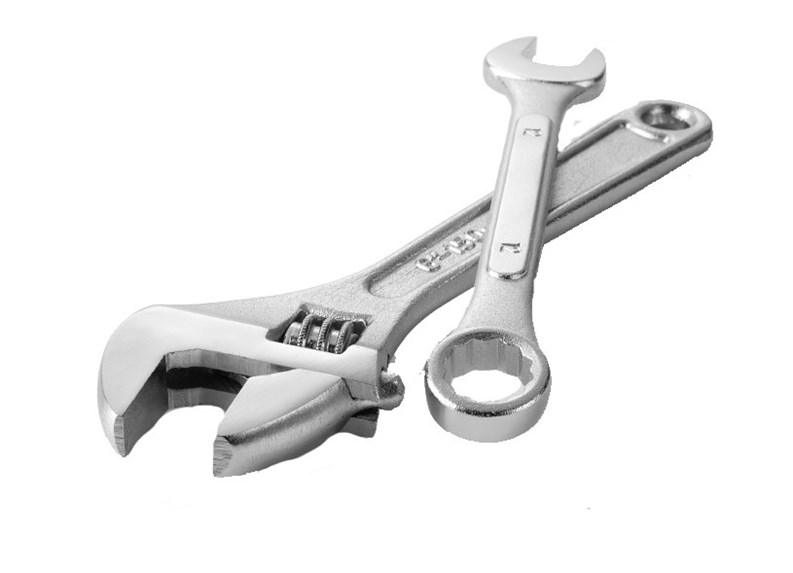Nobody likes that unsettling feeling when you turn on your kitchen tap only to get a stream of cloudy, fizzy water. It's something that's happened to nearly everyone, no matter where you live, and it can't help but make you wonder if your water's clean enough to drink - and just who exactly is monitoring it.
For New Yorkers, the question of clean water is a worry-free one, for the most part. New York State water is among the cleanest in the nation. But sometimes it's not the water source itself that building and unit owners have to worry about; it's what happens to the water as it travels through city pipes or into plumbing systems. Any number of things can happen to water as it traverses those systems, but luckily, there are a lot of options available for managing, purifying and keeping the drinking water in your building safe.
According to the Environmental Protection Agency (EPA), better than 90 percent of water systems in the United States meet its standards for tap water quality. The system that services New York City is one of those. New Yorkers' water comes from a network of 19 reservoirs and three controlled lakes in a nearly 2,000-square-mile watershed north of the city. The vast majority of that water comes from the Catskill/Delaware System, with a smaller portion coming from the Croton System upstate. A very small percentage comes from wells. All told, the New York City reservoir systems provide an average of 1.3 billion gallons of drinking water to more than eight million residents daily.
The City of New York's Department of Environmental Protection (DEP) collects well over a thousand water samples each month to monitor quality and safety at fixed sampling stations throughout the city. Workers test for a number of contaminants based on guidelines established by the EPA and the New York State Department of Health. Information is collected on bacteria, chlorine levels, pH, inorganic and organic pollutants, odor, and more.
One important thing to remember, according to the EPA, is that there is no such thing as "naturally" pure water; all water contains impurities. The trick is to maintain safe, low levels of impurities, which is exactly what the city and state test for each month.
"Water quality right now is good in New York City," says Jennifer Carey of JLC Environmental, a company which provides water testing services. "We have a lot of great reservoirs supplying us."
In fact, according to the DEPs' Drinking Water Supply and Quality Report (2001) "the quality of New York City's drinking water remains high and meets all health-related state and federal drinking water standards."
In 2001, DEP collected more than 43,000 in-city samples and performed approximately 500,000 analyses, the report says. New York City's water falls within acceptable parameters for most chemicals and health-related pathogens like giardia and cryptosporidium. In some cases, color, an aesthetic condition found in the Croton groundwater system, may occasionally exceed state and federal standards and instances of excessive iron and manganese may also lead to discoloration problems, according to the report.
DEP conducts analyses and monitors constantly for a broad spectrum of microbiological, chemical and physical components that affect the quality of water streaming out of your building's tap.
Contaminants that may exist in source water include microbiological and inorganic compounds, pesticides and herbicides, organic chemicals, and radioactive compounds. And New York City's water is virtually lead-free out of the tap, but may pick up some sediments from solder, fixtures, and older plumbing found in the pipes of some buildings or homes. You can request a free testing kit to determine the lead levels in your drinking water, by calling DEP's 24-hour Help Center at (718) DEP-HELP. The EPA also has a safe drinking water hotline at 1-(800) 426-4791.
As with any natural resource, there are times when otherwise-good situations might fluctuate. Sometimes bacteria levels can increase, or silt can become more apparent in water. If ever levels of contamination become risky for the majority of a population, the EPA requires water suppliers to contact all affected residents and provide them with information on how to protect themselves.
Some portions of the population may need to take extra care in protecting themselves. Sometimes bacteria levels that are safe for the general population can adversely affect individuals with compromised immune systems, such as very young children, the elderly, people living with HIV/AIDS or other immune system disorders, people undergoing chemotherapy, or individuals who have undergone organ transplants. "As the population ages, this is going to become more serious," says Stan Klein, president of Worldwide Water Technologies, Inc., a water testing and purification company based in Long Island City. Among the bacteria of concern are giardia, gram-negative bacteria, and cryptospiridium, which caused an outbreak of cryptosporidiosis in Milwaukee that infected several hundred thousand people and killed 100, most of whom already had weakened immune systems.
Most of these bacteria will not harm the average individual. Most of the Milwaukee residents infected suffered stomach flu-like symptoms and recovered quickly. "If you're healthy, you're going to stay healthy," Klein says. "If you're ill or elderly, you might be at risk."
So what's a co-op or condo board required to do to keep their residents and their building's water supply safe? No building has to test its water, but it is in the best interest of contented residents to keep on eye on what's coming through the pipes. Even if the water coming out of state reservoirs is pure and clean, contamination can still occur as it makes its way into buildings and apartments - everything from fertilizer runoff to industrial pollutants to lead in the pipes can trickle into the water and cause problems.
Most buildings don't really need to test their water unless there are visible signs of a problem. "It can depend on how [the management] feels the plumbing system is functioning, or if it's old," Carey says. "If [residents] are concerned about discoloration or other problems, we can check to see if there's any concern for liability."
If you suspect a problem with your building's water, a professional water-testing company can come in and test at several points throughout the building's water system, starting at the point where water first enters the building. That way, they can differentiate and tell if the pollutant comes from an exterior or interior source. Then they'll test water at the tap in various apartments throughout the building. "You can tell then if plumbing within the building is failing," says Carey.
Depending on the types of analyses that are done and the scope of the project, basic water-testing services can cost anywhere from $500 to $1,000 for preliminary testing and a report.
Apartment owners also can take matters into their own hands with basic water quality test kits designed for home use. Several companies sell these kits, including Hometest (www.hometest.com), which sells its WaterSmartâ„¢ Sample Collection Kit for $75. Homeowners collect samples of their tap water, which they then ship back for laboratory testing. The lab tests the samples for bacteria, nitrates, radon and lead. Soon after, results are sent back to the homeowner.
If a unit owner or building manager is worried about water quality, tests of either the whole building or individual units are imperative - not simply for liability reasons, but because testing is the only way to solve the problem. No single device exists that will rid water of every type of contaminant, so water testing is needed to determine the exact areas of concern in order to devise a proper plan of action.
Happily, a number of options exist for cleaning water and bringing it back to levels of highest quality. Worldwide Water Technologies recommends two devices that are large enough to handle entire buildings.
The Water-Rite system is an on-site electrolytic generator the size of a refrigerator. It creates chlorine dioxide, a sanitizer for water approved by the EPA. Klein describes it as effective against bacteria, viruses, fungi, spores and cysts at low doses without being corrosive or producing harmful byproducts. The New York City Board of Health recently approved the system for domestic hot water and pilot projects for drinking water.
Klein's company also distributes LightStream Technologies' ultra high intensity pulsed UV technology, which uses high doses of UV light to kill biological agents. "This technology has been proven effective against bacteria and any organic compounds," Klein says. "We use a safe, inert gas xenon bulb, which gives greater power output and is self-regulating." The system won't clean existing bacteria that may have built up in a building's pipes, but WorldWide Water will provide a cleaning service to those pipes before installing the new technology.
Klein recommends the UV device for larger buildings or developments. The price tag hovers around $140,000 installed, although prices will vary. Prices on the Water-Rite system also vary, although there is a monthly usage charge of around $10 to $15 per apartment, with a minimum cost of $600 per month. Figure out what the building's population is spending per month on bottled water, Klein says, and the cost of each technology makes sense.
Individual unit owners worried about water quality can purchase filters. Various filters exist for various problems - sediment filters weed out the grit, while carbon filters remove other extraneous materials - basically fine-tuning taste, color and odor. Used together, these filters can get the job done well for less than a few hundred dollars.
One caveat when it comes to filters is that they must be changed on a regular basis - usually every few months or so. Otherwise, the very grit and grime unit owners are trying to remove can start building up in the filter. "Filters can remove dirt particles and some rust, so the water comes out looking cleaner, but it doesn't kill bacteria," Klein says. "There is some concern that because they trap dirt, they may actually breed bacteria."
For co-op and condo boards and residents, the bottom line is that for the most part, drinking water in and around New York City is safe. In older buildings, in those buildings where plumbing systems have posed a problem in the past, or when visible evidence of water problems surface - such as discoloration or unusual odor - it's worth the expense to test water quality, especially for residents susceptible to infection and illness. If problems are found, the myriad options available to building and unit owners make solving the situation economical for just about any budget. In the long run, clean, fresh water and good piece of mind are worth it.







Leave a Comment